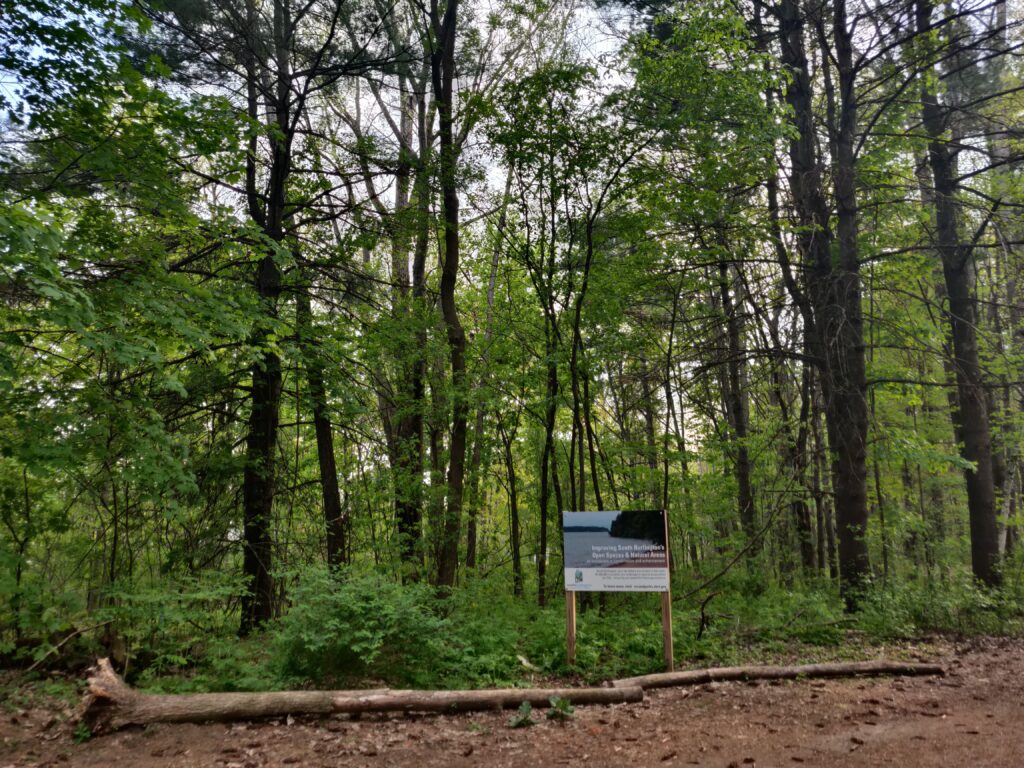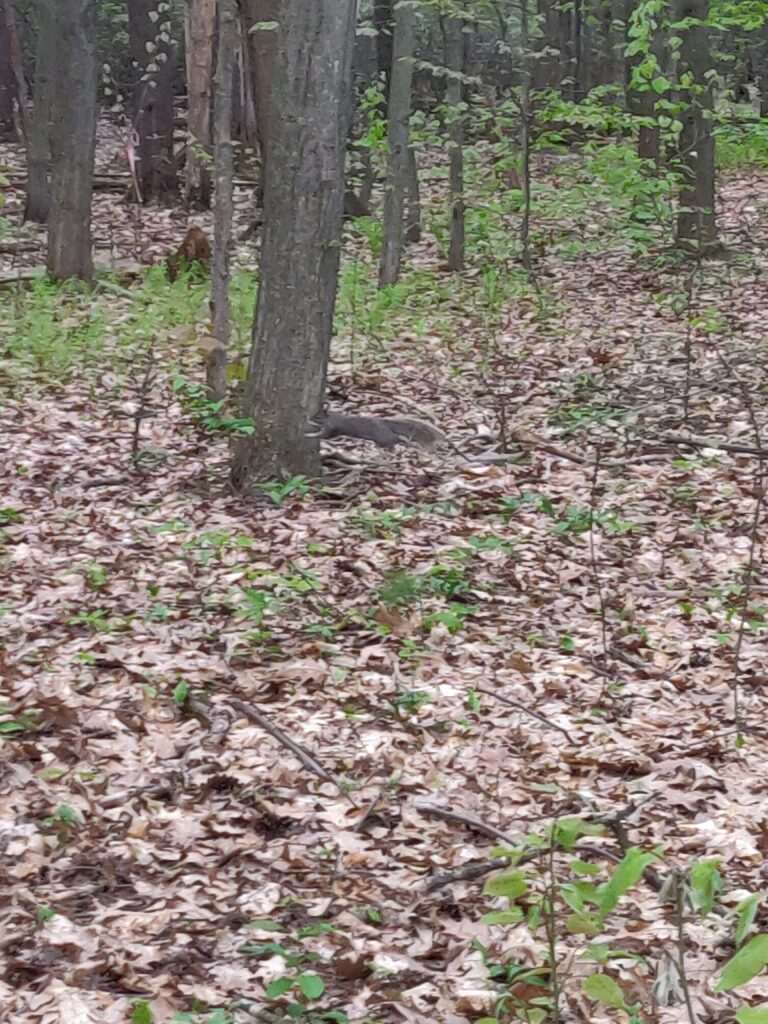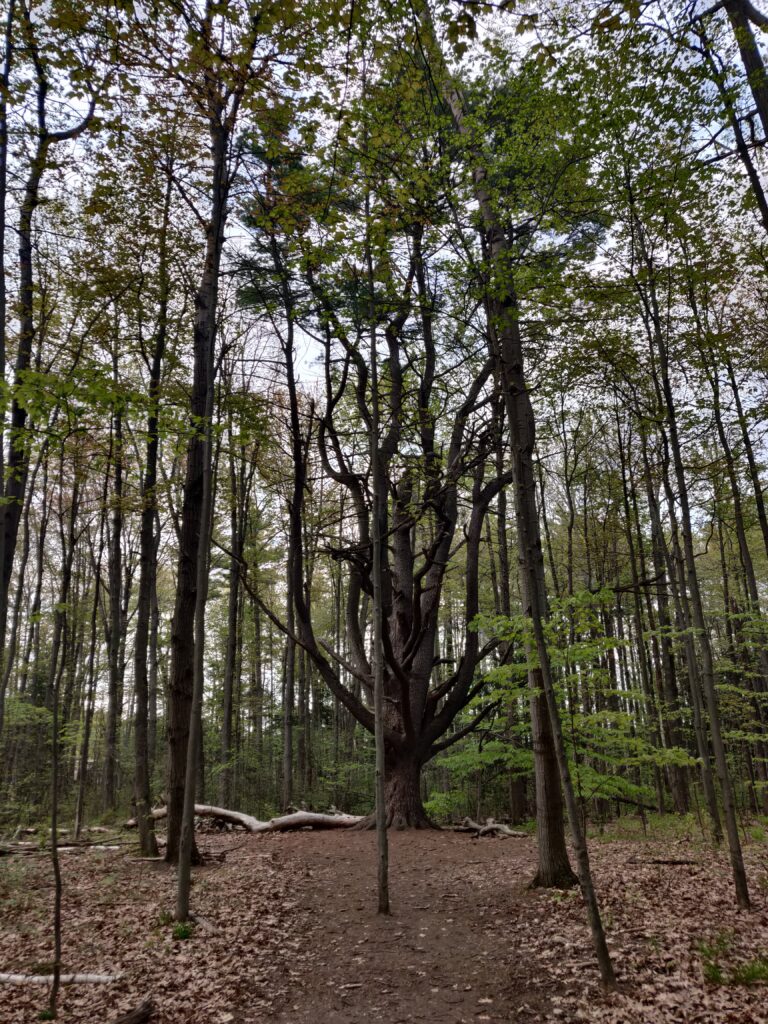After visiting in a new season, my phenology spot has seen numerous changes. For one, everything is much, much greener – plants, grass, and the leaves of most trees are fully out, signaling the beginning of summer. The ground is littered with the maple and oak leaves from seasons prior, as a consistent shade of green and yellow take over the planned forest.

This visit was also far more lively than the last, with the constant sounds of birds chirping, bushes rustling, and squirrels running about.
Below is a photo I was able to take of a common gray squirrel mid jump

And of course, below is another check in for the legacy pine, surrounded by young oaks, tall maples, and paper birches just out of frame.

Nature and culture intertwine in this place as it has very interesting history. Its constant deforestation for industry in the last century has shifted this park alongside Vermont’s values for nature. When Vermont embodied a lumber industry powerhouse – so did this plot of land. The majority of the trees in this forest are very young, in fact, the only tree still standing from this parks entire recorded history is the 300 year old legacy pine that is pictured above (for some reason or another the land developers always chose to spare that tree, from when the park was grazing land to when it was a timber operation). In the current day, the park embodies the state’s more modern culture surrounding nature, the outdoors, recreation, and conservation. It also serves as a cultural center for the nearby community, being located right next to a residential area and serving those that live and visit there.
However, as beautiful as my spot is, I cannot say that I am “part” of this place. It’s out of the way from where I reside, and serves mainly those living closer to it. For that reason alone, I wouldn’t consider myself a part of this place – just a curious tourist and environmentalist that enjoys the nature that Red Rocks Park has to offer.